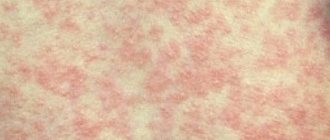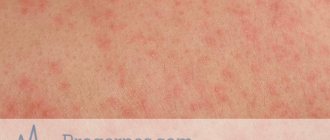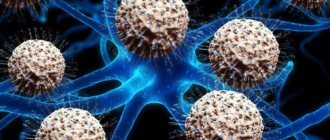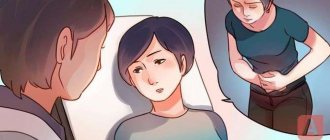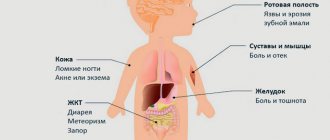Last updated - July 29, 2020 at 6:35 pm
Reading time: 5 min
Helminths are simple worms that live in the human body and cause harm to it. Some types of parasites can appear in the body over a fairly long period of time without showing themselves in any way.
Children are most at risk of infection because... Often, insufficient compliance with personal hygiene standards leads to the appearance of harmful microorganisms.
In case of a positive conclusion from a specialist about the presence of helminths, many parents wonder: what to do if my child has worms?
There are two treatment methods: drug therapy and folk remedies.
Roundworms or nematodes
The most common group of helminths in young children, which causes various types of nematodes.
A feature of roundworms is the complete absence of the respiratory and circulatory systems. They absorb oxygen throughout their entire body.
The sizes of worms vary from small to medium worms, and the habitat of individuals is various parts of the intestine. Pinworm is the causative agent of enterobiasis, which is often diagnosed in children under one year of age.
Pinworms
These are one of the most common helminths in infants. They can be seen in a child's potty with the naked eye.
- The size of females reaches 12 mm, and males 5 mm. Their body shape is similar to a spindle.
- In females the tip is pointed, in males it is twisted into a ring.
- At the top, the body is slightly expanded and equipped with a vesicle (mouth), with which the pinworm is attached to the intestinal wall. The oral cavity gradually passes into the region of the esophagus, followed by the intestines and genital opening.
Pinworms have a special life cycle, in which females die after laying eggs, and males die after mating. Therefore, you can often see large numbers of these parasites in a baby’s stool. They look like scraps of white threads.
Many parents say they have seen similar black worms in their stool. But parasites do not have such colors. Most often, particles of undigested fiber from food are mistaken for worms.
What happens in the body after using pyrantel?
Pyrantel is an anthelmintic that reliably blocks the transmission of impulses in helminths, thereby leading them to die and exit the body through the anus. Pyrantel affects only adult individuals and only developing ones, but does not affect the larvae, no matter how many there are, while moving through the body.
After its use, helminths leave the body within a day along with feces. Pyrantel itself comes out with worms, and a small part comes out with urine.
It is available in the form of tablets and suspension, which makes it much easier for children and adults to take.
All about the effects of Pirantel on the human body
The use of pyrantel should be based on the following indications:
- It effectively treats enterobiasis. This disease indicates the presence of pinworms in the human body. This is the most common form, in which about 90% of people from all over the world become infected.
- Ascariasis. After pyrantel, the worms leave the human body.
- Ankylostomiasis. This disease is characterized by the manifestation of anemia and infection of the circulatory system. Pyrantel puts the body in order after additional destruction of worms.
- Nekatoroz. The most tenacious parasite from the class of nematodes, which leads to dyspepsia, allergies and anemia at the same time. Pyrantel reliably protects the body from its manifestations, removing it through the anus.
In the case of an increased amount of medication, side effects may occur. Among them are:
- Brain disorders.
- Excessive sleepiness.
- Overwork.
- Hallucinations.
- Indigestion.
- Diarrhea.
- Rash.
- Fever.
Contraindications include: hypersensitivity; state of pregnancy and breastfeeding period; overexcitement; hypertension; angina or tachycardia.
The properties of Pirantel include:
- It consists of medicinal preparations that have an antiparasitic effect.
- After taking Pirantel, the worms are destroyed and released.
- It not only removes worms after some time, but also restores the body. For this purpose, it has antibacterial, antifungal, disinfectant and anti-inflammatory properties.
- Since Pirantel does not contain toxins, it can be used for preventive measures.
The composition of the drug includes:
- Ant tree bark extract.
- Peel and seeds of grapefruit.
- Clove seeds.
- Peel and fruit of walnut.
- Pumpkin seeds.
- Sagebrush.
- Oregano extract.
- Ginger.
- Olive.
- Chlorophyllin.
Approximate dosage of Pyrantel
When taking the medicine, special attention must be paid to the correct dosage. This drug can be taken by children aged 6 months and older, as well as by adults. The dosage will be carried out depending on how much weight the baby or adult has, as well as by measuring it with a special glass or spoon.
- Children from six months to 2 years are recommended to take 120 mg.
- Up to 6 years – 0.25 g.
- Up to 12 years – 0.05 g..
- Weight up to 80 kg – 0.75 g.
- Over – 1 gr. Exactly how much depends on the number of kilograms.
How does pyrantel work in the human body?
After taking the medicine, painful thoughts begin on the topic: what do waste items look like - worms?
The drug, once inside the body, reliably blocks the neurons and muscles of helminths, thereby reducing their activity to zero. Thus, the suction cups that held them on the intestinal walls cease to hold them after taking the medicine. Parasites exit through the anus in their original form. Thus, if after taking the drug - as a prophylaxis or treatment - you see a worm in the stool, it means that it will definitely no longer be in the body.
To release the parasite after using the drug, there is no need to use additional agents - this drug already has them.
Possible consequences after taking Pirantel
The above indicators of the effect of the drug and the exit of helminths from the body through the anus are approximate. In general, there may be several possible reactions of parasites to medicine:
- The worms did not come out. This does not necessarily mean that the medicine is not effective. Additional reasons may be: the absence of worms inside, a small dose of the drug, an incorrectly selected drug.
- Immobility of parasites after taking Pirantel. Most often, they come out in their original form.
- Fragmentary parts of worms. This may occur due to digestion or destruction.
- Digested type of parasites. The worms were in the intestines for a long time in a destroyed state.
What determines the appearance of parasites leaving the body?
The appearance of parasites depends on the presence of many factors:
- Method of action of the drug.
- Bowel speed
- Amount of contents in the stomach.
- Consumption of certain types of foods.
- Predisposition to stool disorders.
- The amount of dosage of the drug taken.
- The speed of breakdown of Pyrantel elements in the body.
Thus, parasites can be clearly visible or remain invisible. In order to make sure that they are completely gone, you can carry out prophylaxis after taking Pirantel. It is also possible to study feces for the presence of helminth eggs, or the worms themselves through testing.
Types of worms in a child, photo
The most common parasites in our climate zone are:
- Nematodes : ascariasis, enterobiasis, trichuriasis, trichinosis, ankylostomiasis
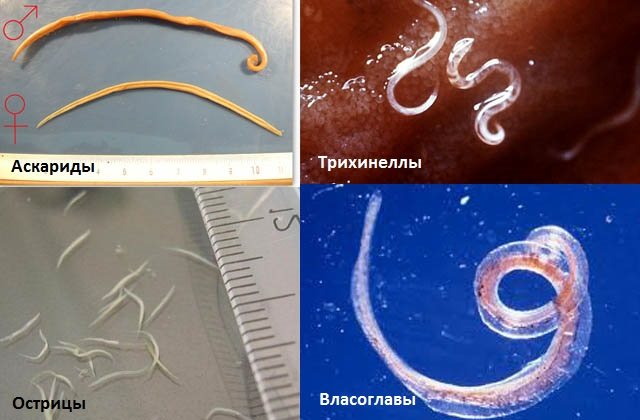
Roundworms (nematodes)
- Cestodoses : hymenolepiasis, taeniasis, teniarinchiasis, diphyllobothriasis, echinococcosis.
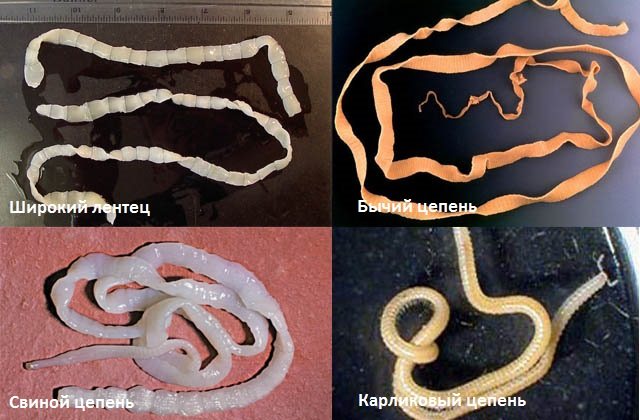
Tapeworms (cestodes)
- Trematodes
: opisthorchiasis, fascioliasis
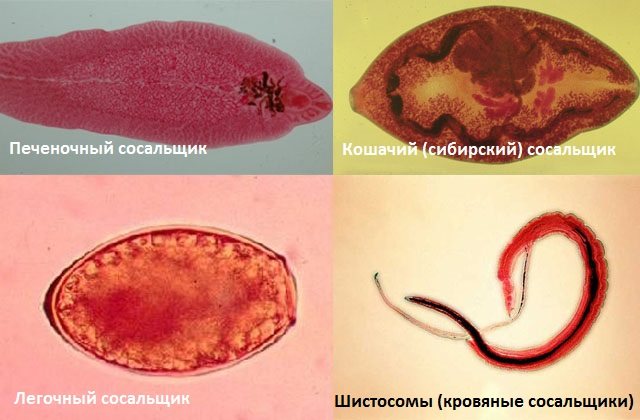
Preventive measures
Preventative measures include:
- Washing berries, vegetables, fruits and herbs. Fish and meat should be cooked for 40 to 60 minutes,
- Control of cockroaches, flies and cockroaches. If you have pets, you need to deworm them, regardless of the presence of symptoms,
- Washing hands with soap after any contact with animals,
- Monitoring the cleanliness of household items,
- Systematic treatment and trimming of nails. To avoid repeated infections with worms, you need to regularly change your underwear and bed linen.
Elena Malysheva in the video in this article will continue the topic of characteristic symptoms in the case of helminthic infestation.
Infection with parasites, or, in other words, helminthic infestation, is one of the most common diseases in children. According to statistics, in our country, out of 10 infected people, 8 are children. This is due to the fact that children are often not inclined to maintain personal hygiene, do not wash their hands after playing in the yard and after interacting with pets, and thus increase the risk of becoming infected with worms (helminths).
This article will be about the causes of infection, symptoms and main methods of treating helminthiasis.
How to get your child tested for worms?
It is worth noting that stool analysis is considered the most common. To do this, you need to take the first portion of feces per day into a sterile container. The biomaterial must be delivered to the laboratory within 2 hours. This is a simple type of analysis; similar studies are carried out in any district clinic. A referral can be taken from a pediatrician.
Common ways to get tested for worms:
- Blood. This type of analysis is the most accurate; in 95% of cases it gives reliable results. It can be used to determine helminthiasis, even if there are no obvious signs and symptoms of infection.
- Scraping You can carry out the fence using tape or a cotton swab. It is necessary in the morning after waking up to rub a cotton swab around the anus. You can apply the tape to the baby's anus with the sticky side. This piece of tape is placed in a sterile container. There is no need to wash your child’s bottom before taking a test.
Causes
The baby is in close contact with mom and dad. The main cause of helminthic infestation is considered to be non-compliance with personal hygiene rules. This includes not only unwashed hands, but also poorly processed foods that children are given to eat. Pets are another danger. In close contact with an untreated animal, the risk of developing helminthiasis increases twofold. Parasites are found on the paws of animals, fur, and upon contact with children, the parasite eggs enter the baby’s body.
If a pregnant woman was infected with worms, then the risk that the fetus will be infected is high. The larvae are carried in the blood through the organs and reach children through the placental barrier. As a consequence: the baby is born with a helminthic infestation, so it is not surprising that worms appeared in a month-old baby. The most common routes of infection in a child are:
- Contact with infected objects.
- Playing outside.
- Infected animal.
- Eating poorly processed foods.
- Babies put everything new and interesting into their mouths, so worms in a one-year-old child do not surprise doctors.
You may also be interested in: Treatment at home: removing worms
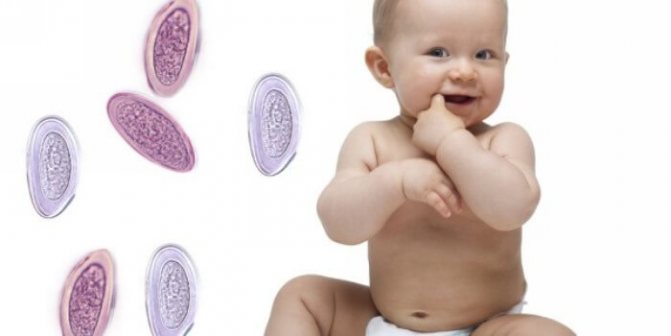
Children under one year of age are also not protected from the risk of invasion, since they enjoy communicating with animals, tasting sand, and tasting new things. Doctors can diagnose pathology at an early stage. However, there are obvious clinical manifestations that indicate that uninvited guests have taken up residence in the body.
Children are unable to take care of personal hygiene. All responsibility rests with the parents. Whether infants can have worms depends on the adult.
Symptoms
Not all helminths cause obvious clinical signs of disease in children. There are such individuals that stay in the human body for years and do not make themselves known. The impetus for their development is a decrease in the host’s immune defense. Thirty years ago, a theory arose among scientists that it was parasites that provoke serious somatic pathologies of internal systems and organs, including cancer processes. And to this day this opinion does not lose its relevance.
Almost each of us, and even a child, becomes an unwitting carrier of infections of various origins - bacterial, viral, fungal and parasitic. Worms and protozoa live in the human body at its expense, feeding on products entering the digestive tract, as well as blood and epithelial cells. At the same time, helminths secrete toxins and poisons that clog the body and provoke unpleasant symptoms in the form of low-grade fever, weakness and other health problems.
Since there are many types of parasites, experts have identified a list of common clinical symptoms indicating the presence of invasion in the body. Let's look at them in more detail:
- changes in appetite both upward and downward, drooling, nausea, weight loss;
- allergic reactions of various forms;
- headaches, weakness, bowel disorders such as constipation and diarrhea, periodic discomfort in the right hypochondrium;
- brittle nails and hair, deterioration in the appearance of the skin caused by a chronic lack of vitamin B12;
- frequent infectious and inflammatory pathologies of the nasopharynx and intimate area.
Since helminthiasis causes a colossal amount of toxic compounds to enter the human blood, the child’s nervous system is seriously affected. This aspect manifests itself in the form of increased irritability, uncontrollable outbursts of aggression, sleep disorders, problems with perseverance and concentration. All of the above points are also in addition to the symptoms of helminthic infestations.
Take a test for worms
The first signs of worms in the body of children and adults
Worms are the colloquial name for parasitic worms that live in humans and animals. A person can become a carrier of several types of parasites:
- compact helminths or, more simply, pinworms: these are nematodes belonging to the oxyuride family and living in the human intestines. Pinworm is the most common causative agent of helminthiasis. A representative of this type of parasite is extremely small: 2-5mm - the length of the male; 10-12mm - females;
- geohelminths: this group includes roundworms, necators, whipworms, etc. The most common disease caused by this group of parasites is ascariasis, in which helminthic infestation occurs with roundworms that are localized in the small intestine;
- Biohelminths: This class of parasites includes worms that change several hosts during their life cycle. Biologists include nematodes, cestodes, as well as bovine and pork tapeworms (tapeworms can reach several meters in length) to this type.
Why does helminthic infestation happen?
Worms can appear in adults and children for a number of reasons. Worms can be found in the soil and in animal feces in the larval state. Children can become carriers of worms when playing with pets, so it is important to ensure that your child washes their hands after handling pets or being outdoors.
In addition, invasion can occur due to insufficient heat treatment of meat or fish products. River fish can be infected with a tapeworm - tapeworm. Worm larvae can be found in the water, so you should not drink raw river water.
You can also “give” yourself helminthiasis by contacting a sick person.
Localization of parasites
Pinworms, as well as nematodes and tapeworms, live in the large intestine. However, tapeworm larvae can spread through the blood and lymph throughout the body and often even get into the eyes. Some parasites live in the liver and bile ducts, disrupting their function.
Ascariasis
This disease is caused by the penetration of roundworm larvae into the body. The larvae spread throughout all systems of the body, adults are localized in the intestines. Ascariasis is dangerous, first of all, due to poisoning of the body by waste products of ascarids. The disease can also be characterized by pain in the abdominal area.
Ascaris larvae enter the human body through the mouth from dirty hands after contact with soil or domestic animals, or from poorly washed vegetables, fruits, and berries. Symptoms of ascariasis appear 1.5 months after infection. Body temperature rises, dizziness and nausea appear.
The functioning of the immune system gradually decreases, and a person begins to suffer from acute respiratory viral infections and acute respiratory infections more often than usual.
A person affected by roundworms has a decrease in appetite, disruption of the gastrointestinal tract occurs (abdominal pain occurs regularly, diarrhea periodically develops). A particularly dangerous consequence of ascariasis is blockage of the intestinal lumen and the development of intestinal obstruction, but such a pathology occurs relatively rarely, only with massive helminthic infestation.
A common external manifestation of ascariasis is skin rashes similar to urticaria, resulting from intoxication. At the same time, patients’ hair appearance and skin color deteriorate. Ascariasis seriously disrupts the processes of absorption and assimilation of nutrients.
With prolonged infestation, the patient's bronchopulmonary activity is impaired, breathing becomes difficult, but there are no signs of colds.
To diagnose ascariasis, a patient's stool is analyzed; it must be examined no later than 24 hours after defecation.
Another evidence of the presence of worms in the intestines is an increased level of eosinophils in a general blood test. At the same time, the level of leukocytes in the blood may increase. In the presence of bronchopulmonary pathology, sputum can be collected - it may contain roundworm larvae.
Pinworms are small and the most common helminths in humans. Pinworm infection can be suspected if the patient is bothered by constant, acute itching in the anus. The disease associated with pinworm infestation is called enterobiasis. Pinworms live only in the human body, feeding on the contents of the small intestine, simultaneously causing inflammation of the walls.
The female lays eggs in the anus. Pinworms live in a temperature range of 36-38ºС. In such “greenhouse” conditions, the incubation period of eggs is several hours. The danger of pinworm eggs also lies in the fact that they can get on household items - bedding, underwear, toys.
Invasion can occur in the following ways:
- when swallowing eggs contained on household items;
- through a handshake with a previously infected person;
- through food products that have not been thermally processed and thoroughly washed;
- when caring for a patient with enterobiasis;
- in contact with pets;
- when scratching the anus.
Pinworm infestation begins to manifest itself 2 weeks after the worms enter the body. This is when permanent, unbearable itching begins in the anal area. In women, itching can also spread to the genitals.
Pinworms can cause urinary incontinence. The stool becomes liquid and contains mucus. At the same time, various allergic reactions may manifest themselves.
With mass invasion, the symptomatic range can expand to the following manifestations:
- headache and dizziness;
- bloating;
- defecation disorders;
- memory and concentration disorders;
- irritation of the skin in the anal area. The area near the anus may become inflamed due to pathogenic microflora entering the scratching area.
To diagnose enterobiasis, doctors are guided by data obtained from examining scrapings from the anus.
To prevent pinworm infection, it is necessary to carry out wet cleaning in the living room every day, promptly change underwear and bed linen, treat children's pots with boiling water, and observe personal hygiene rules (especially when cutting nails: it is under the nails that pinworm eggs can accumulate).
Diphyllobothriasis
This disease occurs due to the ingestion of tapeworms, also called tapeworms, into the human body. The carriers of these creatures are river inhabitants - crayfish, fish, etc.
The worm gets into a person when he eats uncooked fish. You can also often catch a tapeworm if you do not wash your hands after handling a knife that was used to gut infected fish.
The worm becomes capable of reproduction within a month and a half after entering the body.
When infected with tapeworms, a person experiences nausea, occasional vomiting, and chronic fatigue syndrome. There are multiple abnormalities in the functioning of the cardiovascular system.
A major help in diagnosing the disease is a blood test. In the presence of tapeworms, the level of hemoglobin and red blood cells in the blood decreases, and the level of bilirubin, on the contrary, increases.
In advanced stages, intestinal obstruction and decreased sensitivity of the limbs may manifest themselves.
Diagnosis of the disease begins with the attending physician clarifying the fact that the infected person has consumed river fish. The patient submits stool for analysis; Fragments of worms or their eggs are found in the feces. To avoid illness, you should carefully heat-treat fish, especially freshly caught fish.
Signs of helminthic infestation
Regardless of the type of parasite that has penetrated, helminthic infestation has a number of common symptoms:
- rashes and skin irritation;
- swelling of varying severity;
- breathing problems;
- swollen lymph nodes;
- constant weakness, fatigue;
- tendency to allergic reactions;
- there may be blood in the urine;
- frequent urination;
- abnormal stool, possible blood in the stool.
Certain types of parasites contribute to the occurrence of necrotic processes in the body. The initial asymptomatic course of the disease can lead to pleurisy, peritonitis, and disorders of the central nervous system.
Worms can lead to changes in body weight, and weight may increase. This is due to metabolic disorders and changes in the amount of production of certain hormones. Worms can also cause dangerous changes in blood sugar levels.
A person infected with parasites is overcome by nervousness. This is because the toxins released by the worms irritate the nervous system. Anxiety, irritability and depression are caused by permanent poisoning with toxic waste products of helminths. Other neurological abnormalities include sleep disturbances and bruxism (teeth grinding during sleep).
With helminthic infestation, chronic fatigue syndrome develops: the infected person becomes apathetic and irritable. There is a constant weakness, similar to the sensations of the influenza virus, accompanied by memory impairment and absent-mindedness.
Worms may be responsible for muscle and joint pain. Some species of worms choose joint fluid as their habitat. When worms are localized in the joints, a person experiences sensations similar to arthritis. During their life, parasites can seriously injure muscle tissue.
A helminthic infestation can easily be confused with a cold - a person’s temperature rises, a runny nose appears, and sputum is produced. With massive and prolonged infestation, worms can cause pneumonia.
Diagnostics for the presence of worms in adults and children
Having described the signs of worms, let’s move on to diagnosing the presence of parasites. A number of general procedures are provided for children and adults, regardless of the type of parasite that has settled in the body. A scraping is made from the anus area; in women, an additional scraping is taken from the perineal area.
With helminthic infestation, the patient's liver almost always enlarges. If there is a small amount of helminths in the body, then there may be no symptoms of infestation at all.
The presence of worms can be suspected if dyspeptic symptoms appear: digestive disorders, early satiety, heaviness in the abdomen.
Enterobiasis manifests itself most noticeably at night, when the itching in the anus becomes unbearable. Parasitic worms can also parasitize the liver, causing toxic hepatitis and pancreatitis. Worms can cause many neurological abnormalities. If helminthic infestation is not resisted, these abnormalities can take a chronic form.
If it is necessary to obtain additional information about the nature of the infection, doctors take urine, bile, sputum, and muscle tissue samples for analysis. Rectal and perianal mucus is examined for the presence of parasite eggs or helminth fragments. To obtain information about the location of parasites, ultrasound or tomography, as well as endoscopy and endobiopsy are used.
Getting rid of parasites
Many people consider the presence of helminths to be a delicate problem and therefore are in no hurry to turn to clinical medicine. Traditional medicine also has in its arsenal many recipes for removing helminths from the body, some of which are controversial. The most popular method is to eat pumpkin seeds.
Pumpkin seeds actually contain a lot of essential oils, which are poisonous to helminths. To get rid of worms you need to take 100g of peeled seeds, grind them, pour a glass of hot water and then add 2 tablespoons of honey. Use the mixture in the morning on an empty stomach. You need to eat one spoonful of the mixture per hour.
Then you need to take a laxative or use an enema to empty your bowels.
The possibilities of official medicine are incomparably wider. Several groups of drugs have been developed, each to combat a specific type of parasite:
- medications based on mebendazole, optimal for getting rid of pinworms;
- diethylcarbamazine - drugs based on it work well against filariasis, they can kill subcutaneous worms, as well as parasites in the eyes;
- praziquantel is effective against tapeworms and tapeworms;
- piperazine adipate: a rather specific active substance that acts on pinworms and roundworms, paralyzes, but does not kill them. After taking it, you must definitely empty your bowels;
- Levamisole is suitable for getting rid of the vast majority of worms, except tapeworms and tapeworms.
In the acute stage, doctors recommend, in addition to the main therapy, symptomatic remedies that eliminate the unpleasant side effects of helminthic infestation. When body temperature rises, antipyretics are allowed, analgin can be taken to relieve pain, and suprastin can be taken to relieve allergic reactions.
Preventing Infection
By following the rules of personal hygiene and thermal processing of products, you can be sure that there will be no infection with worms. It is necessary to wash your hands before eating or after returning from the street, and change bed and underwear in a timely manner.
Pets must undergo antihelminthic treatment and vaccination in advance. To avoid invasion, you should eat only washed fruits, vegetables and berries. The fish must be thoroughly thermally processed (especially if the fish is caught independently in the river).
Lightly salted fish or caviar should be excluded from the menu.
If there are frequent trips to nature, constant contact with soil or various animals, regular preventive anthelmintic therapy is recommended. Children should be tested for helminths twice a year.
Source: https://xn—-dtbcuopexef.xn--p1ai/priznaki-glistov/u-cheloveka/pervye-priznaki.html
Helminthiasis in infants: features of the disease
As a rule, parasites are detected in preschool children, starting from two years of age. In infants, this situation is rare, although such cases cannot be completely excluded. A baby becomes infected with parasites from about six months, when his diet includes the first complementary foods, potentially dangerous from the point of view of pathogenic microflora and helminths, or he begins to explore the world around him.
Infection in such a child is much more difficult to diagnose. Symptoms of the disease in a baby are the following, which are often confused with manifestations of other pathological processes:
- anxiety and poor sleep;
- hyperemia and swelling in the anus, and in girls near the external genitalia;
- digestive disorders: tendency to hold stool or, on the contrary, diarrhea, vomiting, abdominal cramps;
- weight loss, lack of appetite;
- pale and dry skin, blue under the eyes;
- allergic rashes on any part of the body, most often in the legs;
- low-grade fever of unknown origin;
- intermittent cough not related to respiratory infections.
All of the listed signs of helminthiasis in a child indicate various disorders. To confirm the diagnosis, it is necessary to submit the baby’s stool for an appropriate analysis.
It is much more difficult to cure the disease in infants than in older children. The fact is that most anthelmintic drugs are contraindicated for up to two years, and they also have serious side effects. For a fragile organism, such experiments can result in disastrous consequences. But what to do if a baby has a confirmed helminthic infestation?

Secondly, a parasitologist can actually prescribe drug therapy if the disease directly threatens the health of a small child. Deterioration of immune defense, general intoxication of the body and dysfunctional digestive disorders will not result in anything good for a growing baby, except for serious health problems. Sometimes helminthiasis threatens the life of an infant if parasites in large numbers affect internal organs and systems.
Traditional medicine cannot and should not be used in the treatment of infants under one year of age. This is due to the fact that despite the external harmlessness, all medicinal plants are highly toxic and can cause a toxic effect on the child’s body. It is also almost impossible to choose the dosage for the baby, so such treatment can cause more harm than good.
Why are parasitic worms dangerous?
Helminths of any type certainly cause harm to a small organism, regardless of their habitat.
They feed on beneficial substances from the blood of the carrier, thereby provoking vitamin deficiency. In preschool children, growth inhibition and decreased physical activity are observed. The chronic form of the disease can cause more serious consequences. Helminths are toxic; their waste products can penetrate into every corner of the body, provoking the formation of allergic reactions, disorders of brain activity, depression of emotional disposition and even hepatitis.
Large nodes of parasitic worms can block the intestines. Roundworms have the ability to infect internal organs and cause peritonitis. Pinworms in young women can lead to diseases such as vaginitis, cystitis, etc. Worms can also cause a prolonged dry cough, especially during sleep.
Treatment of worms in children
Before selecting treatment, the pediatrician must diagnose the disease and determine what type of helminth is present in a particular case. To do this, it is recommended to test stool for eggs/larvae of worms more than once, but for 3 days in a row. Based on the data obtained, a set of indirect symptoms and the exclusion of other pathologies that cause a similar clinical picture, the child, and sometimes all family members, are prescribed anthelmintic therapy in order to avoid the formation of a focus of infection.
It means:
- preparation for the removal of parasites;
- treatment directly aimed at eliminating helminths;
- elimination of painful symptoms;
- restoration of the functioning of the immune system, gastrointestinal tract and other organs whose function has been impaired by worms.
As preparatory means, parasitologists, infectious disease specialists, pediatricians and other specialists who help cure helminthic infestations use vegetable oils such as flaxseed and pumpkin. They quickly bind all toxic substances that were formed as a result of the vital activity of helminths and remove them from the body. Enterosgel can be prescribed from pharmaceutical sorbents. It is harmless and non-toxic, and therefore is freely given to children even from the first month of life.
For the treatment of worms, drugs are selected taking into account the pathogen. Most often these are broad-spectrum medications. Eg:
- Decaris - tablets that cause paralysis of the muscles of roundworms, pinworms, whipworms and about 5 other types of helminths; The children's release form has a pleasant apricot smell and light orange color, which “interests” the child in taking the medicine.
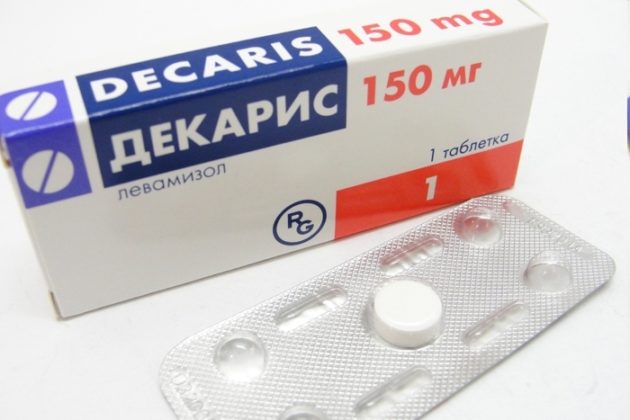
- Pyrantel is a drug for the treatment of enterobiasis, trichuriasis, ascariasis, necatoriasis (caused by the necator worm) and hookworm disease (hookworms); effectiveness is achieved through neuromuscular blockade of parasites; Children are usually prescribed in the form of a cloudy yellow suspension.
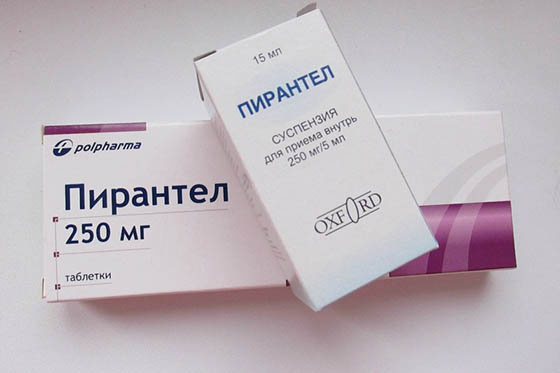
- Vermox is a white or beige tablet product that is used for the treatment and prevention of infection by pinworms, roundworms and other ill-wishers; it is also often prescribed for mixed helminthiasis; It has a detrimental effect on worms by depleting the glycogen supply in their tissues.
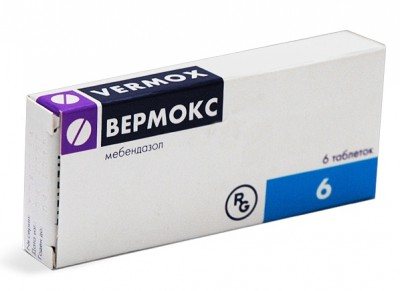
Since symptoms and treatment are inseparable concepts in medicine, therapy is required to combat individual manifestations of the disease. For example, he may be prescribed antihistamines (Suprastin, Diazolin), mucolytics and bronchodilators (Bromhexine, Ambrobene, Mucaltin), antispasmodics (Papaverine), iron supplements (Irovit, Venofer - for anemia).
Medicines designed to maintain and restore natural microflora (Bifiform, Linex) will help treat gastrointestinal dysfunction caused by worms.
Milk thistle products (Geparsil, Darsil) will help normalize liver function. In order to increase immunity, children are prescribed multivitamin complexes (Alphabet, Vitrum Baby) and immunostimulants (Immunal, Transfer Factor Kids).
Surgical treatment is used extremely rarely, only in the following cases:
- prolonged spasm of the small intestine due to the presence of dead roundworm in it;
- blockage of the child’s bile ducts by worms;
- perforation of the intestinal wall by helminths; acute appendicitis caused by parasites clogging the appendix.
How to detect the presence of helminths
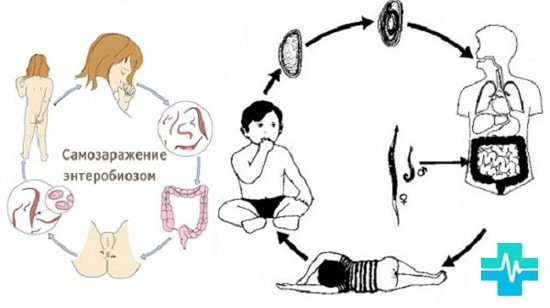
There are situations when harmful worms can be seen when examining the contents of a pot, often these are pinworms.
And then the mother sounds the alarm: the child has worms, what should be done?
In addition, the presence of parasitic worms can be determined by laboratory testing of stool or scraping. However, most often parasites can be identified by external symptoms. The child's mood can often change, positive emotions are replaced by crying.
Treatment with folk remedies
With the help of folk remedies you cannot completely get rid of parasites, but you can speed up the treatment process and boost your immunity. There are several recipes that are extremely useful for worms.
- Pumpkin seeds. Pumpkin seeds have a negative effect on worms and promote their release, while improving digestion. A few hours before breakfast on an empty stomach you need to eat a small handful of seeds - this should be done every day until complete healing.
- Garlic. Garlic essential oils have a detrimental effect on parasites, so it is recommended to eat it in case of helminthic infestations. It is enough to eat a few cloves with a bite of black bread before breakfast to notice the positive effect.
The best effect can be achieved by combining folk remedies and medications. It is also important to follow all the rules of personal hygiene, otherwise the disease will recur. In general, the prognosis for pinworms and roundworms is favorable: with proper treatment, these parasites go away fairly quickly.
How to cure a child from parasites?
If helminthiasis is diagnosed, treatment must be started. To get a complete picture, determine the type of parasite. To combat this disease, specialized drugs have been created - anthelmintics. When a child is ill, the issue of choosing a medicine becomes especially acute. A competent specialist will help, you cannot neglect his advice.
There are more than 10 different drugs in the doctors' arsenal. There are broad-spectrum and narrow-spectrum agents. All antiparasitic drugs are very toxic. Different dosages and treatment regimens are used. The course of treatment is repeated after two to three weeks, since not all medications act on eggs. Here are some basic medications:
What to do if parents are against medications? Treatment of worms is also carried out using folk remedies (for more details, see the article: treatment of worms in children using folk remedies). Prepare decoctions, infusions and tinctures. Especially folk remedies are used to save young children from illness. A child, especially one under one year of age, has a hard time tolerating medications. Examples of folk recipes:
- Infusion of pomegranate peel. Finely chop and dry the peel, pour 10 g of boiling water, infuse, drink a teaspoon at a time.
- Onion infusion. Infuse the crushed head for 12 hours, drink ½ glass 3-4 times a day.
- Garlic tincture. Take 5-6 heads of garlic, pour half a liter of vodka, infuse for about a week, after which the product is filtered. Take 20 drops before meals 30 minutes. The course lasts 3-4 days.
It is possible to defeat parasites!
Antiparasitic Complex® - Reliable and safe removal of parasites in 21 days!
- The composition includes only natural ingredients;
- Does not cause side effects;
- Absolutely safe;
- Protects the liver, heart, lungs, stomach, skin from parasites;
- Removes waste products of parasites from the body.
- Effectively destroys most types of helminths in 21 days.
There is now a preferential program for free packaging. Read expert opinion.
Interesting to know:
Symptoms of pinworms in adolescents
An indicative sign of enterobiasis is itching in the anus, which often bothers teenagers at night, as well as when relaxing and warming up under the covers. At night, the female pinworm easily crawls to the anus and lays up to 5 thousand eggs near it.
Severe itching and irritation allow the eggs to quickly penetrate under clothing, onto the skin, bedding and nails of a person. With enterobiasis, the main symptom of worm infection is itching and scratching of the anus.
Itching in the anus leads to the following phenomena:
- Restless sleep
- tossing and turning
- Anxiety,
- Insomnia.
Symptoms of worms in adolescents always manifest themselves as either weight loss or insufficient weight gain. The child quickly gets tired, becomes restless, easily excitable, and inattentive. There are frequent delays in studies.
An additional symptom in girls is enuresis. Worms crawl into the genitals, which leads to involuntary urination during sleep. For parents, this fact should be a clear signal to take their child to the doctor to be tested for enterobiasis.
Penetrating into the vagina, pinworms can cause vulvovaginitis. Helminths can reach the fallopian tubes, which leads to inflammatory processes in the uterus, since there is an infection in the genitals. In addition, when an impressive number of helminths accumulate in the cecum, acute appendicitis can begin.
Bruxism, that is, teeth grinding at night, is a well-known symptom of infection with worms of any kind. Also, as a result of enterobiasis, a teenager may begin to:
- intestinal dysbiosis,
- prolonged entrocolitis,
- constipation,
- abdominal pain in the navel area,
- nausea.
A helminthic infestation that lasts for a long time leads to a decrease in the absorption of microelements, vitamins and other nutrients. In turn, this is reflected in the level of immunity and hemoglobin. Therefore, a child may often suffer from various ailments.
The vital activity of pinworms provokes toxic poisoning in the body of a teenager. The larger the helminthic infestation, the more pronounced the intoxication, which is manifested by constant weakness, weight loss, and pain.
Ascariasis is recognized as one of the most dangerous types of helminthic infestation.
Such parasites can infect any human organ. As a rule, worms appear in:
- lungs,
- pancreas,
- liver,
- gallbladder,
- heart,
- brain.
Roundworms enter the human body with the help of their eggs, which reside in the soil. If you neglect personal hygiene, frequent contact with soil, and insufficient washing of food, ascariasis will appear.
When such eggs enter the mouth, over three months the larvae migrate from the small intestine through the blood to all organs.
As a rule, the larvae end up in:
In many cases, the child develops a fever and a low-grade fever. Characterized by general malaise and a dry cough with blood or nonspecific sputum. During this period, x-rays of the lungs may show volatile infiltrates.
If you repeat the x-ray, the movement of the infiltrates will become noticeable. A teenager may also develop obstructive bronchitis, pneumonia, pleurisy or bronchial asthma.
In adolescents in the primary phase of ascariasis, the liver, spleen or lymph nodes are often enlarged. A characteristic manifestation of helminths is the appearance of a strong allergic reaction. As a rule, this is urticaria on the feet and hands. Allergic dermatoses also often occur.
Three months after infection, at the late intestinal stage, roundworms again enter the intestines, which leads to dyspeptic disorders and various disorders of the gastrointestinal tract.
Thus, the child experiences:
- stomach ache,
- diarrhea or constipation,
- redness of the anus,
- vomiting and nausea,
- flatulence,
- fast weight loss.
Decreased immunity due to prolonged helminthic infestation provokes various infectious processes. Thus, purulent lesions of the skin and mucous membranes occur, as well as recurrent stomatitis. In addition, any ascariasis constantly poisons the teenager’s body.
Worm infestation has a toxic effect on the nervous system, which is expressed in various neuropsychiatric disorders, such as epileptic seizures, nightmares and insomnia.
Sometimes a teenager may experience the following symptoms of worm infection:
- photophobia,
- pupil enlargement,
- a sharp decrease in blood pressure,
Ascariasis without timely treatment is dangerous due to its complications, including:
- obstructive jaundice,
- acute appendicitis,
- peritonitis,
- intestinal obstruction.
Bibliography
- Centers for Disease Control and Prevention. Brucellosis. Parasites. Link
- Corbel MJ Parasitic diseases // World Health Organization. Link
- Young EJ Best matches for intestinal parasites // Clinical Infectious Diseases. — 1995. Vol. 21. - P. 283-290. Link
- Yushchuk N.D., Vengerov Yu.A. Infectious diseases: textbook. — 2nd edition. - M.: Medicine, 2003. - 544 p.
- Prevalence of parasitic diseases among the population, 2009 / Kokolova L. M., Reshetnikov A. D., Platonov T. A., Verkhovtseva L. A.
- Helminths of domestic carnivores of the Voronezh region, 2011 / Nikulin P. I., Romashov B. V.
An article for patients with a doctor-diagnosed disease. Does not replace a doctor's appointment and cannot be used for self-diagnosis.

The best stories from our readers
Topic: Parasites are to blame for all troubles!
From: Lyudmila S. ( [email protected] )
To: Administration Noparasites.ru
Not long ago my health condition worsened. I began to feel constant fatigue, headaches, laziness and some kind of endless apathy appeared. Problems also appeared with the gastrointestinal tract: bloating, diarrhea, pain and bad breath.
I thought it was because of the hard work and hoped that it would go away on its own. But every day I felt worse. The doctors couldn’t really say anything either. Everything seems to be normal, but I feel like my body is not healthy.
I decided to go to a private clinic. Here I was advised, in addition to general tests, to get tested for parasites. So in one of the tests they found parasites in me. According to doctors, these were worms, which 90% of people have and almost everyone is infected, to a greater or lesser extent.
I was prescribed a course of antiparasitic medications. But it didn’t give me any results. A week later, a friend sent me a link to an article where some parasitologist shared real tips on fighting parasites. This article literally saved my life. I followed all the advice that was there and after a couple of days I felt much better!
Digestion improved, headaches went away and the vital energy that I so lacked appeared. To be sure, I took the tests again and no parasites were found!
Anyone who wants to cleanse their body of parasites, no matter what types of these creatures live in you, read this article, I’m 100% sure it will help you! Go to article>>>
Still have questions? Ask them in our Anonymous group on VK
How to get rid of parasites in a week. The answer is here!
A reliable and effective remedy for combating worms. Removes all parasites in 21 days.
Go to website
Reviews
Read online
Symptoms that 100% indicate parasites! Take the Test.
How to rid your body of life-threatening parasites before it’s too late!
Read more
Website
To get a consultation
The doctor tells how to quickly get rid of parasites for adults and children!
A parasitologist explains what effective methods exist to combat helminths.
More details
Read completely
Comments
Search for cures for parasites
Other tests
We recommend reading
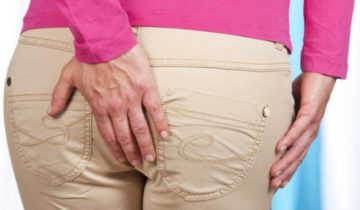
Pinworms in women: symptoms, treatment and how they leave the body
1 week ago 03.09.202003.09.2020ecoliv94
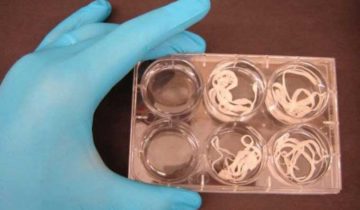
Necatoriasis: what kind of disease is it, what are the symptoms and treatment methods
1 week ago 03.09.202003.09.2020ecoliv94
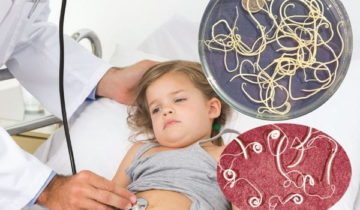
Ascariasis in children: symptoms, causes, drugs and treatment regimens for roundworms
1 week ago 02.09.202002.09.2020ecoliv94
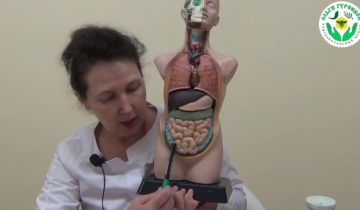
What is helminthic infestation in children and adults, causes and symptoms
07/29/202007/29/2020ecoliv94
Description of symptoms by type of worms
The manifestation of symptoms of worms in humans depends on the type of parasite and the degree of infection of the body. Let's look at the most common helminthic infestations in humans.
Pinworm infection (enterobiasis)
It occurs quite often in children, but it also happens in adults. Parasites settle in the small intestine and bring unbearable discomfort to their owner.
How is it shown:
- severe itching of the anus, especially at night;
- sleep and appetite disturbances;
- cramping pain in the abdomen;
- bloating and gas formation.
The severity of symptoms in a patient depends on several factors: age, phase of development of the disease and the total number of helminths.
At the initial stage, when the spread of roundworm larvae through the bloodstream into organs and tissues is noted, the following symptoms may be expressed:
- Rash on the arms and legs of various types. It causes great suffering to a person.
- The temperature rises to 38 degrees Celsius. In this case, the patient complains of malaise and weakness.
- The presence of a dry or wet cough and shortness of breath may be a concern as a result.
- An enlarged liver and spleen is diagnosed. Pain syndrome may develop in the right hypochondrium.
During the intestinal phase, acute gastrointestinal distress is observed. The appetite and general condition of the patient are impaired. He constantly feels sick and dizzy, and these symptoms are also accompanied by upset bowel movements and emotional lability. Against the background of general symptoms, other diseases such as pancreatitis, appendicitis and even liver abscess can progress.
It parasitizes the intestines and causes the following symptoms:
- lack of appetite caused by nausea and vomiting;
- persistent constipation followed by severe diarrhea;
- severe pain in the abdominal area;
- depression of the nervous system - irritation, severe headaches and sleep disturbances.
The severity of the infestation is sometimes determined by infections with other types of helminths.
How and where can children become infected with worms?
The main risk factors leading to childhood helminthic infestation should be listed:
- If the child does not wash his hands before eating and after using the toilet, as well as after returning from the street, from school, from guests;
- If the child has bad habits - bites nails, puts fingers or other objects in his mouth;
- If there are animals at home that are outside from time to time; in this case, even regular deworming of the pet does not help - there is still a risk of infection with worm eggs brought from the yard;
- Fruits, vegetables, herbs and berries that are poorly washed before consumption;
- Eating poorly cooked, undercooked meat and fish;
- Constant dirt at home, poorly washed floors.
Dear parents, if at least one of the listed factors is present in the lives of your children, then know that your family is at risk of contracting parasites. The situation must be corrected immediately.
Before continuing the story, we should also debunk several very common myths about pets, since every third family in Russia has a dog or cat. So:
- Owners are always convinced that they can get infected from any animal except their pet, which, of course, is a deep misconception. Any animal can become a carrier of parasites;
- Owners think that vaccination of the pet and destruction of helminths should be carried out simultaneously, but in fact, deworming should be carried out once every three months;
- There is no need to feed your cat or dog raw meat - raw meat and fish products may contain worm eggs.
This information should be taken very carefully, since in any family where there are cats, dogs or even hamsters, children are always at increased risk of helminthiasis.

